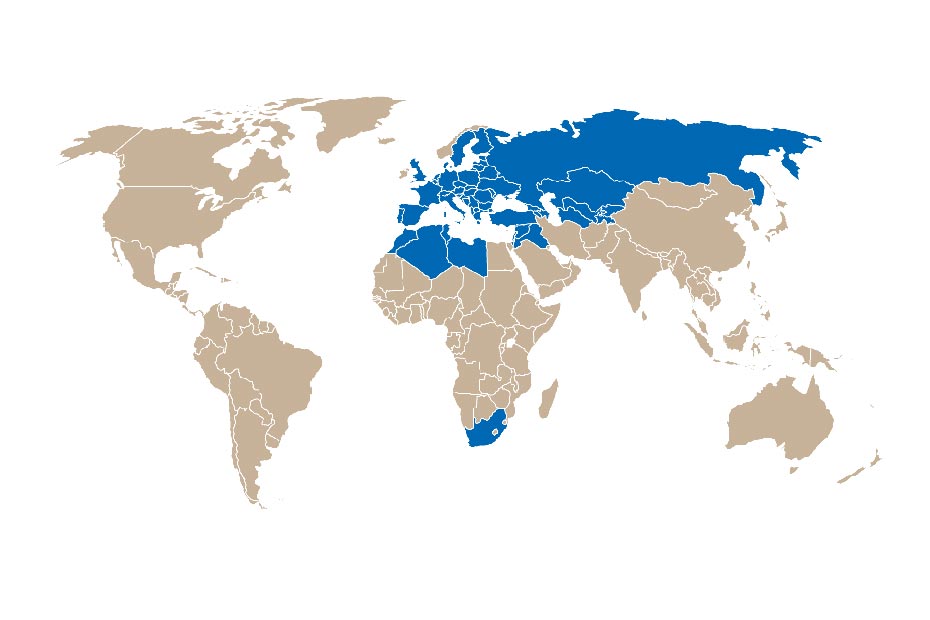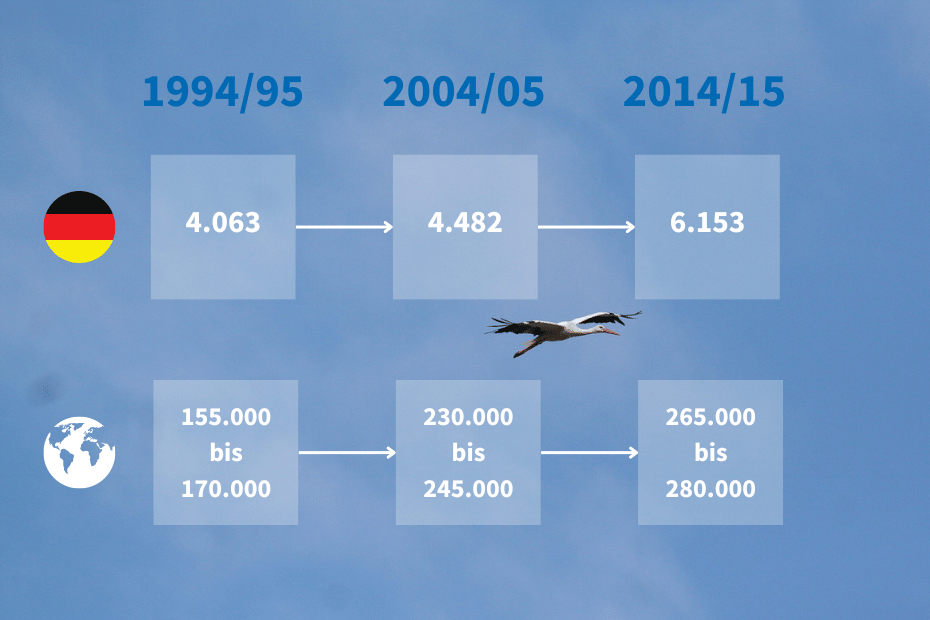More than just numbers: the 8th international white stork census
NABU and the white stork are closely intertwined: it’s not just our mascot and symbol, but a friend we’re determined to protect. Coming up is the eighth white stork census ever to be recorded and the fourth time under NABU's lead: since 1994, NABU coordinates the international effort once every decade.
And it’s about that time again: 2024 is once more the year of the white stork!
By recording breeding pairs of birds, NABU and its partners can estimate the global stork population and collect important data on its trajectory. This helps us predict where the white stork feels particularly at home and where it might need extra protection.
White storks across the globe
The world is full of legends and myths surrounding the white stork: for example, it’s supposed to bring babies to hopeful human parents. While this is of course not true, the real offspring of the stork can be found in 54 countries of Europe, North Africa and Asia. Local BirdLife partners, other NGOs, scientific institutes and other experts count the nesting pairs and submit their records to NABU’s central database.
This makes the white stork census one of the oldest institutionalised monitoring programmes. It offers a comparatively precise overview of regional and global population sizes and trends for this fascinating bird species.
How does the census work?
In most countries, ornithologists count the nesting pairs, with the support of volunteers. Surveys can also be done with the help of questionnaires. In large countries with a high stork population density, representative sample areas are surveyed, and the total population is extrapolated.
Recording takes place in accordance with defined scientific criteria. When counting, we differentiate between
- Number of pairs nesting
- Number of nesting pairs with fledglings
- Number of nesting pairs without fledglings
- Number of nesting pairs with status of offspring unknown
- Total number of fledglings
Things are looking up for the white stork!
Hardly any bird species has an available body of data comparable to the white stork’s. The census contributes significantly to this as one of the oldest regular monitoring programmes in place.
After a population decline and all-time low during the 1980s, the trend has now reversed: stork populations have increased by 40 percent since the census of 1994/95.
One reason for their recovery is a change in the birds’ migratory behaviour on their western route. Improved climatic conditions in their wintering grounds result in lower mortality rates during the season.
Secondly, there are more intact habitats in the breeding areas of the storks than in previous decades – mainly because targeted investments have been made into the restoration and protection of wetlands.
White stork census: 2024 updates
As soon as the latest stork census results are out, we’ll publish them on this page. Initial trends can be expected from mid-2025 onwards.
In the meantime, we’ll update this page regularly with insights about the census and its development in Germany, Poland, Armenia, and other partnering countries. Stay tuned for stork news!
Photo competition: Snap a stork!
In celebration of the ongoing white stork census, NABU went looking for the thirteen best photos for the 2025 NABU white stork calendar. For each stork has its own fascinating story, shaped by its nesting and living conditions. We invited stork enthusiasts to share these stories with us!
The best photos are represented in NABU's white stork calendar for the year 2025. All winners received three copies of the calendar. The photos and their stories are now publicly available on our website.
Competition Closed! The deadline for submissions was August 31, 2024. We received many great entries, from which the jury selected the winning photos.
White stork webcams
Since 2020, NABU's Armenian office has been implementing project activities to research and conserve the country's white stork populations. Webcams are a powerful tool for this work, aiding with eco-education and studies on nesting biology and sources of pollution. This year's nesting season is once again being broadcast via livestreams of two white stork nests in the Arax lowlands. Both nesting pairs already have offspring - take a look!
3 ways to support conservation of the white stork
(Links in this section lead to articles in German language.)
1. Inform: Knowledge is the first step. Educate yourself about the stork's way of life, its threats, and conservation measures on our website. (Should you be based in Germany you can also visit one of our dedicated stork centres.) Understanding why its protection is important is key to taking the right action. Share this knowledge with your peers to help raise awareness and mobilise!
2. Engage: You can take part in nature conservation initiatives that focus on restoring wetlands, as these serve as breeding grounds for the stork. Check in with your local environmental protection groups to find out what you can do in your country, region, or community.
3. Donate: This way, you can help to make stork migration even safer and enable projects for stork and wetland conservation.
More about the stork
-
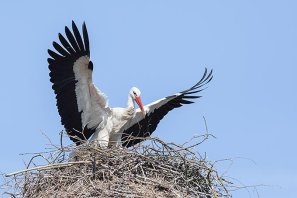
White stork fact sheet (GERMAN VERSION)
The white stork's characteristic appearance makes it easily recognisable anywhere in the world. All you need to know about this majestic bird can be looked up here...
-
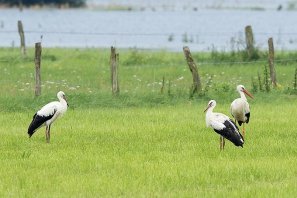
Michael-Otto-Institute (GERMAN VERSION)
The Michael-Otto-Institute in Bergenhusen is dedicated to stork conservation. It coordinates the global stork census since 1994. More information about the centre here...
-
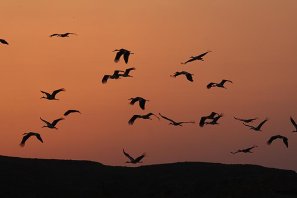
NABU beyond borders
The white stork census is only one of many exciting international projects NABU is engaged in. Find them all here...

